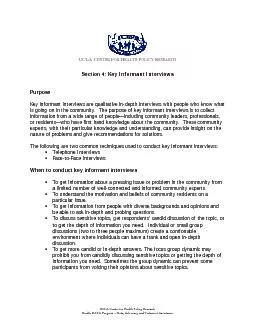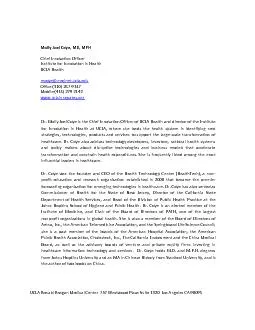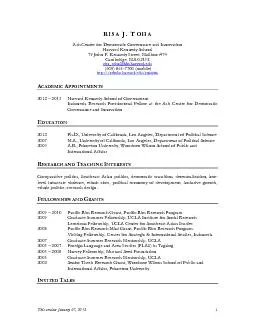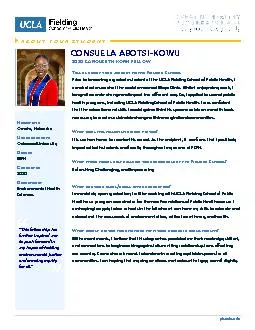PDF-UCLA CENTER FOR HEALTH POLICY RESEARCH
Author : lindy-dunigan | Published Date : 2015-08-15
Section 4 Key Informant Interviews Purpose Ke To understand the motivation and beliefs of community residents on a particular issue To get information from people
Presentation Embed Code
Download Presentation
Download Presentation The PPT/PDF document "UCLA CENTER FOR HEALTH POLICY RESEARCH" is the property of its rightful owner. Permission is granted to download and print the materials on this website for personal, non-commercial use only, and to display it on your personal computer provided you do not modify the materials and that you retain all copyright notices contained in the materials. By downloading content from our website, you accept the terms of this agreement.
UCLA CENTER FOR HEALTH POLICY RESEARCH: Transcript
Download Rules Of Document
"UCLA CENTER FOR HEALTH POLICY RESEARCH"The content belongs to its owner. You may download and print it for personal use, without modification, and keep all copyright notices. By downloading, you agree to these terms.
Related Documents














